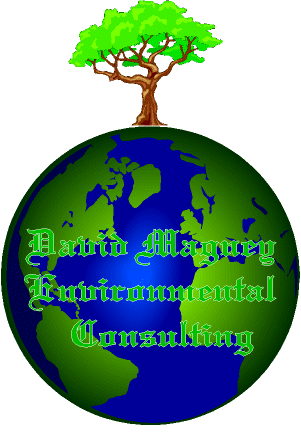
| David Magney Environmental Consulting |
|
Wetland Functional Assessments |
|
|
Home |
|
Wetland Assessments
Wetlands are habitats transitional between open water and terrestrial (dry) land, where water ponds or floods regularly or all the time. Wetlands serve many functions. Those functions vary depending on the type of wetland ecosystem and where the wetland is, but most wetlands have similar functions. The most common type of wetland is found along and within streams, referred to as Riverine and Palustrine wetlands. A typical riverine wetland along a stream has 14 functions, including:
HGM offers an efficient and reference-based set of field techniques for the assessment of ecosystem functioning of waters/wetland ecosystems. The HGM functional assessment protocol is based on scientifically defensible methods for rapid assessment of wetland ecosystem functions. Specifically, with modest training and practice, HGM allows users to document the level of ecosystem functions through the assessment of field indicators of these functions. The HGM method departs from other functional assessment approaches (e.g. Wetland Evaluation Technique [“WET”]) in that it is based upon three fundamental steps:
HGM methodology can be used to estimate the changes in wetland functions expected to result from a proposed project. After the values of wetland functions under baseline conditions are determined, expected changes in the values due to project features are used to calculate the estimated level of impacts resulting from project implementation. For planning purposes, an analysis of expected project impacts can be used to modify the project design so that impacts are minimized. Such an analysis also makes it possible to identify ways in which expected impacts can be mitigated in order to support project approvals. HGM protocols are based on complex hydrogeomorphic models that describe critical stream ecosystem functions primarily in terms of the degree to which natural channel morphology and native plant communities have been maintained relative to reference standard (pristine) conditions. There are three regional riverine wetland HGM models used in California coastal areas: South Coast Santa Barbara Streams HGM, Santa Margarita Watershed HGM, and Central Coast HGM. DMEC has developed proprietary versions of each of these models to apply them efficiently to specific projects. HGM assessments involve the measurement of numerous physical and biological features at locations along the stream reach in the project or study area as described by field protocols. Other features in larger areas beyond and surrounding the project or study site are determined by Geographic Information System (GIS) analysis. DMEC is both experienced with and experts in HGM wetland assessments. HGM assessments conducted by DMEC staff include:
See the “Projects” and “Reports” sections of this website for more details on some of these projects. DMEC is presently developing a regional guidebook for Mojave Desert playa lake depressional wetlands. The Mojave Desert contains numerous large playa lakes, some of which are considered under the jurisdiction of the Corps; however, there is no HGM guidebook for this type of wetland. Therefore, to meet fill this void, DMEC is preparing a preliminary draft guidebook to cover these types of wetlands. |
|
|
Qualifications & Staff |
|
|
Client List |
|
|
Projects |
|
|
Reports |
|
|
Presentations |
|
|
Contact Us |
Mission Statement:
To provide quality environmental consulting
services with integrity that protect and enhance
the human and natural environment.
